 Tempura Matsui, NYC – TM is considered as the best tempura restaurant of NYC. Celebrated NYC’s food journalist Pete Wells rating it with the highest score he is capable of for a non western restaurant, a 2 over 4. Not that Pete Wells knows anything about non Western food. He does not. I mean, the dude knows what is a benchmark restaurant, when it comes to Western food. But for Non Western Food, he has no clue of what is a benchmark restaurant (have you seen Pete Wells scoring a non Western restaurant higher than 2 or 3 over 4?? Exactly ….) – Anyways, Pete Wells is still a dude to reckon with when it comes to informing yourself about NYC’s dining scene and his rating of TM, although it reveals how he is not capable of properly assessing a non Western restaurant (he is basically assessing a Japanese restaurant with the same expectations that he has about a fine dining North American or French restaurant, if that was still not clear in your mind!!), is still an indication that TM stands out of the pack at whatever it is doing in NYC. I went to find out.
Tempura Matsui, NYC – TM is considered as the best tempura restaurant of NYC. Celebrated NYC’s food journalist Pete Wells rating it with the highest score he is capable of for a non western restaurant, a 2 over 4. Not that Pete Wells knows anything about non Western food. He does not. I mean, the dude knows what is a benchmark restaurant, when it comes to Western food. But for Non Western Food, he has no clue of what is a benchmark restaurant (have you seen Pete Wells scoring a non Western restaurant higher than 2 or 3 over 4?? Exactly ….) – Anyways, Pete Wells is still a dude to reckon with when it comes to informing yourself about NYC’s dining scene and his rating of TM, although it reveals how he is not capable of properly assessing a non Western restaurant (he is basically assessing a Japanese restaurant with the same expectations that he has about a fine dining North American or French restaurant, if that was still not clear in your mind!!), is still an indication that TM stands out of the pack at whatever it is doing in NYC. I went to find out.
In Japan, the finest tempura restaurants will reveal how perfecting tempura is not an ordinary task.
They have nothing to do with the ordinary tempura found at the big majority of eateries around the world. They do thrive on paper-thin shells of batter (koromo, in Japanese) coating top quality seafood and vegetables using the finest oil possible and skills they have perfected for years to turn the tempura into a revelation. I wanted to see how Matsui in NYC would fare.
As explained elsewhere on this blog, I am not going to do an inventory of every single food item that I ate. A blog like mine prefers focusing on the the technical aspect of the meal, what needs to be expected from such meal and if that was achieved.
At Matsui, NYC, they use sesame (The main oil used in the Edo era 江戸時代, widely used by Tempura Chefs in Tokyo), peanut and cottonseed oils. The fish is fried in oil that is hotter than the one used for vegetables. As it is typical of high end tempura-ya, you are served the light flavored food items (fish, shrimps) first, then those with a stronger taste (root vegetables, for eg) . Some top quality daikon is left on the table, its purpose is to be incorporated in the sauce ( made of mirin, soya sauce, dashi ) in which you can dip some of your tempuras – the daikon adds to the flavouring of the tempura, and that helps the sauce to stick to the tempura and your tempura not to turn soggy. You also have some salt available.
The meal started with an array of non-tempura mini creations. Traditionally, non tempura items were not served at tempura-yas, but the Chef told the medias that he does this to please his NYC’s clientele.
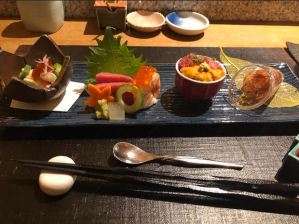 From right to left: Snow crab jelly (the enticing fresh maritime fragrance and superb natural sweetness of the crab at the fore), then sea urchin and high-grade chopped tuna atop some rice (the quality of the sea urchin from Hokkaido even better than at some of the elite sushiya of NYC), then Toro tuna sashimi/shrimp/salmon roe (top of the range salmon roe that was even better than the one I had at Sushi Noz the other day), then lobster/okra, soya jelly – all first-rate ingredients with competently rendered textures. The okra came from the US and could hold a candle to the best okras of this globe. 8/10
From right to left: Snow crab jelly (the enticing fresh maritime fragrance and superb natural sweetness of the crab at the fore), then sea urchin and high-grade chopped tuna atop some rice (the quality of the sea urchin from Hokkaido even better than at some of the elite sushiya of NYC), then Toro tuna sashimi/shrimp/salmon roe (top of the range salmon roe that was even better than the one I had at Sushi Noz the other day), then lobster/okra, soya jelly – all first-rate ingredients with competently rendered textures. The okra came from the US and could hold a candle to the best okras of this globe. 8/10
 –Seafood savory steamed egg custard, with chunks of abalone (superb balance between a nice firm chew and enough tenderness for an enjoyable mouthfeel – this is the consistency that I came to consider as the ideal one for abalone since the days of my tender childhood in the Indian ocean, blessed with some of this globe’s best and freshest seafood such as the abalone. I am not a fan of the utterly tender/soft consistency that is sometimes the case with certain preparations of the abalone), lobster, shrimp and a topping of Salmon roe (Ikura). Again, high quality sourcing as it would be the case all along this meal. Served hot in this instance, the custard highly enjoyable, its execution flawless (the trio of core elements soy sauce/dashi stock/ mirin perfectly balanced, the silky-smooth texture competently achieved). 8/10
–Seafood savory steamed egg custard, with chunks of abalone (superb balance between a nice firm chew and enough tenderness for an enjoyable mouthfeel – this is the consistency that I came to consider as the ideal one for abalone since the days of my tender childhood in the Indian ocean, blessed with some of this globe’s best and freshest seafood such as the abalone. I am not a fan of the utterly tender/soft consistency that is sometimes the case with certain preparations of the abalone), lobster, shrimp and a topping of Salmon roe (Ikura). Again, high quality sourcing as it would be the case all along this meal. Served hot in this instance, the custard highly enjoyable, its execution flawless (the trio of core elements soy sauce/dashi stock/ mirin perfectly balanced, the silky-smooth texture competently achieved). 8/10
 The first piece of tempura arrived. It was the shrimp. Both the head and the tail of the shrimp are served as it is common at many tempura-yas. Deep-fried shrimp coated with crispy tempura batter crumbs never fails to be enjoyable. Particularly the head (which is not phographed). Good quality of shrimp, tasty tempura. No excess batter as to fully enjoy the taste of the shrimp. The flour batter did not soak up oil. Which is essential to top quality tempura. An important skill that is not as easy to master as it may sound.
The first piece of tempura arrived. It was the shrimp. Both the head and the tail of the shrimp are served as it is common at many tempura-yas. Deep-fried shrimp coated with crispy tempura batter crumbs never fails to be enjoyable. Particularly the head (which is not phographed). Good quality of shrimp, tasty tempura. No excess batter as to fully enjoy the taste of the shrimp. The flour batter did not soak up oil. Which is essential to top quality tempura. An important skill that is not as easy to master as it may sound.
 There was also the highly praised Matsutake mushroom, a luxury that had its distinctive aromas (quite tough to describe. I could describe it as either spicy-aromatic, pungent, or woodsy, and yet it will never do justice to what it really smells like. Even experts cannot describe its fragrance accurately. The best way to understand its taste is just to sample it. ) brought to the fore. As for the tempura itself, I could appreciate that this had a delicate crispness to its batter (made of egg, flour, water – the flour is a special flour imported from Japan and that does a better job at helping the batter to be lighter ) and it’s clear that the oil that was used is immaculate. The control of the temperature is crucial, of course, and yes, they got that one under great control, too.
There was also the highly praised Matsutake mushroom, a luxury that had its distinctive aromas (quite tough to describe. I could describe it as either spicy-aromatic, pungent, or woodsy, and yet it will never do justice to what it really smells like. Even experts cannot describe its fragrance accurately. The best way to understand its taste is just to sample it. ) brought to the fore. As for the tempura itself, I could appreciate that this had a delicate crispness to its batter (made of egg, flour, water – the flour is a special flour imported from Japan and that does a better job at helping the batter to be lighter ) and it’s clear that the oil that was used is immaculate. The control of the temperature is crucial, of course, and yes, they got that one under great control, too.
 –Japanese Whiting fish (Kisu: きす): The fish is of utter freshness, as you would expect from a restaurant of this standing. Being a high end tempura Chef is not just about deep frying seafood and vegetables. It is about —- among other high level technical qualities, of course —- knowing what fish is best for the tempura cooking method. You realize that when you are in the presence of true great Tempura Chefs (In Japan, I did try Tempuraiwai , Sonoji , and 7Chome Kyoboshi , and if you try them solely for bragging about having eaten upmarket deep fried food, if you can’t appreciate such details as the effect of every single fish’s taste and texture in their tempura’s incarnation, if you can’t appreciate the nuances of high end tempuras, nuances that are largely detailed in this article, then it would be wise to refrain from investing your money on this, obviously. Yes, most fishes are great when deep-fried, but the Kisu: きす will reward the tempura Chef not only with a great taste, but its texture is also perfect for a tempura (not greasy, holding perfectly well to the batter, etc). And of course, its spine, full of calcium, is always a delectable treat when deep fried. Another display of impeccable frying technique. Here, the work of the seasoning is not what you should be looking for. Instead, the focus is on the quality of the ingredients and their very own flavor. Which means that the house needs to be extremely good at sourcing its ingredients. The sourcing was indeed of top level.
–Japanese Whiting fish (Kisu: きす): The fish is of utter freshness, as you would expect from a restaurant of this standing. Being a high end tempura Chef is not just about deep frying seafood and vegetables. It is about —- among other high level technical qualities, of course —- knowing what fish is best for the tempura cooking method. You realize that when you are in the presence of true great Tempura Chefs (In Japan, I did try Tempuraiwai , Sonoji , and 7Chome Kyoboshi , and if you try them solely for bragging about having eaten upmarket deep fried food, if you can’t appreciate such details as the effect of every single fish’s taste and texture in their tempura’s incarnation, if you can’t appreciate the nuances of high end tempuras, nuances that are largely detailed in this article, then it would be wise to refrain from investing your money on this, obviously. Yes, most fishes are great when deep-fried, but the Kisu: きす will reward the tempura Chef not only with a great taste, but its texture is also perfect for a tempura (not greasy, holding perfectly well to the batter, etc). And of course, its spine, full of calcium, is always a delectable treat when deep fried. Another display of impeccable frying technique. Here, the work of the seasoning is not what you should be looking for. Instead, the focus is on the quality of the ingredients and their very own flavor. Which means that the house needs to be extremely good at sourcing its ingredients. The sourcing was indeed of top level.
 –Hokkaido Sea urchin (uni) tempura – the soft consistency of the sea urchin is the perfect counter balance to the crunch of a fried batter, adding textural excitement on the palate, and that is exactly what came out from sampling this piece of tempura. The sea urchin was wrapped in edible kelp (kombu) as to stop the creamy sea urchin from falling apart during the deep frying process as well as adding texture to it. As you would expect from fresh quality sea urchin, wrapped like a ‘sandwich’ in any leafy element (in this case, the edible kelp), then deep fried in top quality oil, not one single presence of oil to be found, but just the great fresh taste of the seafood, this was a piece of joy in mouth. Again, as with all the other pieces of tempura, the high level tempura skills (light coating, superb quality batter, swift deep frying, great control of the heat of the oil) was always in evidence.
–Hokkaido Sea urchin (uni) tempura – the soft consistency of the sea urchin is the perfect counter balance to the crunch of a fried batter, adding textural excitement on the palate, and that is exactly what came out from sampling this piece of tempura. The sea urchin was wrapped in edible kelp (kombu) as to stop the creamy sea urchin from falling apart during the deep frying process as well as adding texture to it. As you would expect from fresh quality sea urchin, wrapped like a ‘sandwich’ in any leafy element (in this case, the edible kelp), then deep fried in top quality oil, not one single presence of oil to be found, but just the great fresh taste of the seafood, this was a piece of joy in mouth. Again, as with all the other pieces of tempura, the high level tempura skills (light coating, superb quality batter, swift deep frying, great control of the heat of the oil) was always in evidence.
 –Abalone – The distinctive maritime flavor of the seafood brought to the fore (here, too, an essential technical aspect of high end tempura). Tempura is just a cooking technique that is perfect in unlocking the inner flavors of an ingredient. It’s supposed to do that better than through, boiling, to take an example. If a piece tempura does not do that, then it is better to simply boil or grill that ingredient. Here’s an example of a restaurant where you can better understand how tempura cooking fulfills that task of doing a better job at unlocking the flavors of an ingredient than boiling or grilling. And, as already stated earlier on, their work of the abalone is superior to the one of many elite Sushiyas in NYC because they do a better work at retaining the seafood’s inner flavour and tenderizing it to the perfect balance between the right firmness and the right crunch (not an easy task as many do tenderize the abalone too much, sometimes to the point of allowing it to feel almost like a gel, which has nothing to do with the sea snail’s natural consistency. I understand that you need to tenderize the abalone, but when it is almost like a gel, you are distancing yourself from the point of eating a piece of abalone, which is to enjoy some …sea snail. Tempura Matsui did a great job at reminding us that it is a sea snail that we are eating and not some Jell-O ). So, yes it is tender, but it is also firm and features a nice crunch. 10/10 for the superb preparation of the abalone! The cottonseed oil that they use is designed to enhance the flavour of seafood and vegetables, and judging by the taste of this tempura, that was not just an advertising suggestion but a reality as well (the natural flavor of the abalone is truly enhanced) . I was observing the Chef during the frying: he uses the right motions so that virtually no oil stays in the batter.
–Abalone – The distinctive maritime flavor of the seafood brought to the fore (here, too, an essential technical aspect of high end tempura). Tempura is just a cooking technique that is perfect in unlocking the inner flavors of an ingredient. It’s supposed to do that better than through, boiling, to take an example. If a piece tempura does not do that, then it is better to simply boil or grill that ingredient. Here’s an example of a restaurant where you can better understand how tempura cooking fulfills that task of doing a better job at unlocking the flavors of an ingredient than boiling or grilling. And, as already stated earlier on, their work of the abalone is superior to the one of many elite Sushiyas in NYC because they do a better work at retaining the seafood’s inner flavour and tenderizing it to the perfect balance between the right firmness and the right crunch (not an easy task as many do tenderize the abalone too much, sometimes to the point of allowing it to feel almost like a gel, which has nothing to do with the sea snail’s natural consistency. I understand that you need to tenderize the abalone, but when it is almost like a gel, you are distancing yourself from the point of eating a piece of abalone, which is to enjoy some …sea snail. Tempura Matsui did a great job at reminding us that it is a sea snail that we are eating and not some Jell-O ). So, yes it is tender, but it is also firm and features a nice crunch. 10/10 for the superb preparation of the abalone! The cottonseed oil that they use is designed to enhance the flavour of seafood and vegetables, and judging by the taste of this tempura, that was not just an advertising suggestion but a reality as well (the natural flavor of the abalone is truly enhanced) . I was observing the Chef during the frying: he uses the right motions so that virtually no oil stays in the batter.
 Crab – scored and served wrapped in shiso leaves . Light coating that was technically well achieved. Not oily at all. Sesame oil is advertised as imparting more umami and aroma to the tempura, and here, too, that was not just some advertising suggestion blowing in the wind. So, you had more aroma because of the oil, but zero sign of oil. Yep, that is the ingenuity of high end tempura.
Crab – scored and served wrapped in shiso leaves . Light coating that was technically well achieved. Not oily at all. Sesame oil is advertised as imparting more umami and aroma to the tempura, and here, too, that was not just some advertising suggestion blowing in the wind. So, you had more aroma because of the oil, but zero sign of oil. Yep, that is the ingenuity of high end tempura.
 –Maitake mushroom 舞茸 : perfect technique in keeping any excess of moisture at bay, so that the batter adheres to the mushroom better. The natural robust woodsy sensation coming from the mushroom testifying to the perfect timing and heat control of the deep-frying, a second too long, an oil way too hot — or not enoughly hot, and the natural fragrance of the mushroom would have been just a wish, obviously. But, then you have got to make that happen, a feature that is not as easy at it may sound even at plenty of ambitious tempura-yas. And here, they nailed it.
–Maitake mushroom 舞茸 : perfect technique in keeping any excess of moisture at bay, so that the batter adheres to the mushroom better. The natural robust woodsy sensation coming from the mushroom testifying to the perfect timing and heat control of the deep-frying, a second too long, an oil way too hot — or not enoughly hot, and the natural fragrance of the mushroom would have been just a wish, obviously. But, then you have got to make that happen, a feature that is not as easy at it may sound even at plenty of ambitious tempura-yas. And here, they nailed it.
There were plenty of other tempura pieces (onion, okra, eggplant, etc), but I’ll stop the inventory of the pieces of the tempuras here. It is pointless to go on and on with this. You have everything you need to know about their tempura. That’s all we need. I also did not rate the tempura items as, in this instance, they would mean nothing (convey nothing) – as an example, if I prefer the taste of crab to mushroom, I may be tempted to rate the crab higher. But that would convey absolutely nothing. The only time you will see me rating a piece of tempura is if the performance was weak, or of benchmark mention. At Tempura Matsui, the performance was uniformly of a very high level of technique and that is all we need to extract from the assessment of the above mentioned pieces of tempuras.
After the flight of tempuras, I had:
 Tendon Tempura Rice Bowl – Traditionally, the meal gets into its final stages with a dish of rice. Here, I did opt for some shrimp kagiake (several kinds of seafood and vegetables are deep-fried in batter) tempura served atop freshly steamed rice. This came with a tentsuyu sauce and a tempura shiso leaf. Fine quality shrimp, fine taste, the tentsuyu sauce flawless. 7/10
Tendon Tempura Rice Bowl – Traditionally, the meal gets into its final stages with a dish of rice. Here, I did opt for some shrimp kagiake (several kinds of seafood and vegetables are deep-fried in batter) tempura served atop freshly steamed rice. This came with a tentsuyu sauce and a tempura shiso leaf. Fine quality shrimp, fine taste, the tentsuyu sauce flawless. 7/10
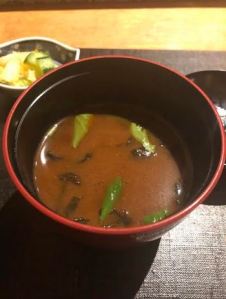 Also served with the dish of rice: Akadashi red miso soup. Its miso paste is made of roasted barley flour, rice miso, steam-cooked soy bean. In this instance, dashi (dried kelp, bonito fish flakes ) is added. All of that translating into an expected fully-flavoured miso soup expressing enticing fresh strong bursts of umami taste sensations (from the particularly long fermentation of all involved ingredients, essentially) as well as toasty (coming from the roasted barley flour, obviously) and earthy notes. 8/10
Also served with the dish of rice: Akadashi red miso soup. Its miso paste is made of roasted barley flour, rice miso, steam-cooked soy bean. In this instance, dashi (dried kelp, bonito fish flakes ) is added. All of that translating into an expected fully-flavoured miso soup expressing enticing fresh strong bursts of umami taste sensations (from the particularly long fermentation of all involved ingredients, essentially) as well as toasty (coming from the roasted barley flour, obviously) and earthy notes. 8/10
Some pickles were also served. The pickles kept confirming the assured technical skills found all along this meal, with flawless pickling technique in evidence, and, of course, the expected top-flight ingredients and precise timing in serving the pickles that you came to expect at this level of dining. 8/10
Good to know – 3 facts :
(1)At your typical mainstream tempura restaurant, the batter is usually texturally thicker, the color dense, its seasoning competing with the flavour of the the ingredient. At a high end tempura restaurant, the focus is on both the technique of the batter (how feather light, how utterly crispy, how almost transparent it can be) and the quality of the ingredient (it has to express its intricate flavour fully and not compete with the batter’s flavour. The batter is actually not flavoured. For that to happen, the quality of the ingredient has to be of supreme quality, and there should be NO seasoning involved). Tempura Matsui being a high end tempura restaurant, I do expect them to fulfill the basic above mentioned expectations any Tempura connoisseur has for a high end tempura. Did they? Absolutely.
(2)Many Japanese food items rely on subtlety in both the texture and the taste. Therefore keep that in mind as to avoid the inevitable clash with the perception of textures and flavours that you would have carried on from eating other types of food. You definitely need to spend some time educating you senses with what needs to be expected from Japanese high end tempura as your usual notions of texture and flavours have absolutely nothing to do with it.
(3)We are talking about feather light batter and the sole expression of the flavour of the featured ingredient here. If such things pass as pure BS to you, if you prefer bold flavours and thick tempura batter, then clearly, going to a high end tempura restaurant is like trying to rely on the moon to get some sunlight. Ain’t gonna happen.
 Bottom line: (Category: High-End tempura in North America) – The level of technique (good control of the temperature of the oil, precise heat and timing, competently lightly rendered textures where and when need be, every single item perfectly steamed on the inside, crisp on the outside, the inherent flavours of the ingredients brought to the fore, etc) on display that you came to expect from a proper high end tempura shop of this reputation was always in evidence. I think that Michelin got it right on this one (They did award Tempura Matsui with a 1 star). As argued elsewhere on this blog, I do not always agree with the Michelin star rating (a blatant example of that is the 1 star that was awarded to Torishin), but TM is a first-class restaurant from the classy behaviour of every single staff member, to the luxurious and tasteful Japanese-styled interior (they even have a high tech Japanese toilet in the restroom), up to the well sourced ingredients and great level of tempura technique on display. And to top it off, just a few blocks away, the spectacular water view of the East river awaits you. Glad to see that NYC has, finally, a high end tempura restaurant of world class quality. So there is no need to go to eat in Japan, anymore, as all Japanese cuisines are now represented in NYC at the high end level in the form of genuine world class Japanese restaurants that would be respectable venues even in Japan. Tempura Matsui. Overall ratings for Food: 8/10; Service: 9/10 Tempura Matsui Addr: 222 E 39th St, New York, NY 10016, United States Phone: +1 212-986-8885 URL: http://www.tempuramatsui.com
Bottom line: (Category: High-End tempura in North America) – The level of technique (good control of the temperature of the oil, precise heat and timing, competently lightly rendered textures where and when need be, every single item perfectly steamed on the inside, crisp on the outside, the inherent flavours of the ingredients brought to the fore, etc) on display that you came to expect from a proper high end tempura shop of this reputation was always in evidence. I think that Michelin got it right on this one (They did award Tempura Matsui with a 1 star). As argued elsewhere on this blog, I do not always agree with the Michelin star rating (a blatant example of that is the 1 star that was awarded to Torishin), but TM is a first-class restaurant from the classy behaviour of every single staff member, to the luxurious and tasteful Japanese-styled interior (they even have a high tech Japanese toilet in the restroom), up to the well sourced ingredients and great level of tempura technique on display. And to top it off, just a few blocks away, the spectacular water view of the East river awaits you. Glad to see that NYC has, finally, a high end tempura restaurant of world class quality. So there is no need to go to eat in Japan, anymore, as all Japanese cuisines are now represented in NYC at the high end level in the form of genuine world class Japanese restaurants that would be respectable venues even in Japan. Tempura Matsui. Overall ratings for Food: 8/10; Service: 9/10 Tempura Matsui Addr: 222 E 39th St, New York, NY 10016, United States Phone: +1 212-986-8885 URL: http://www.tempuramatsui.com







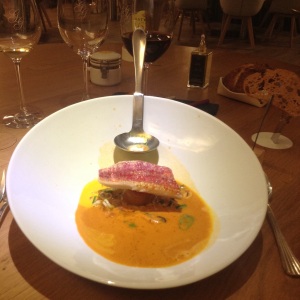


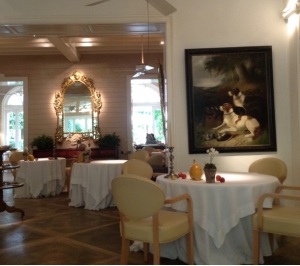

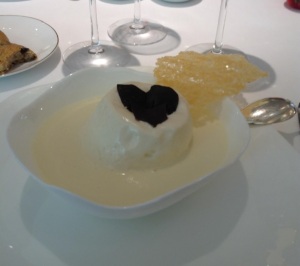

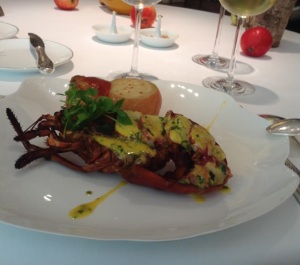

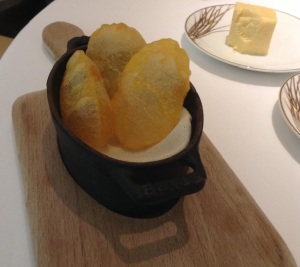



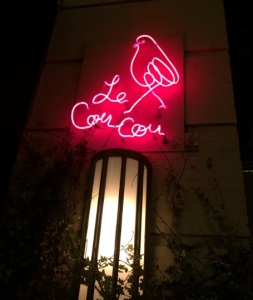


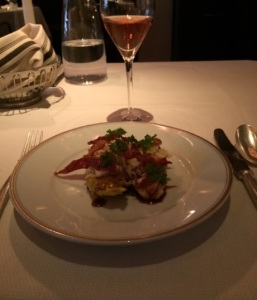
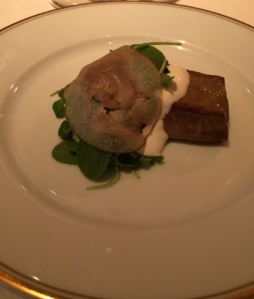

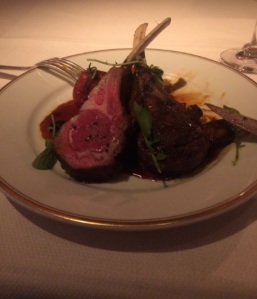
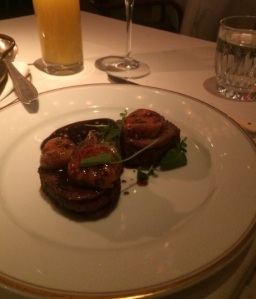
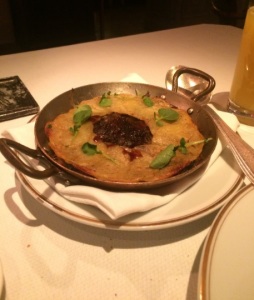
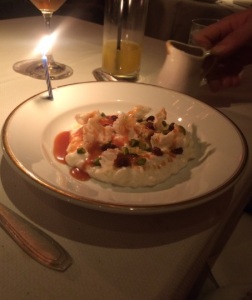
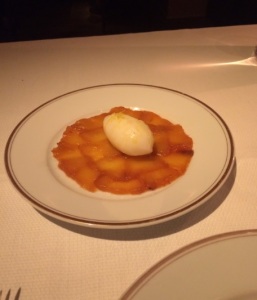
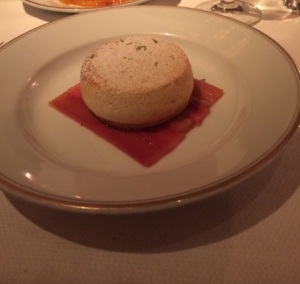
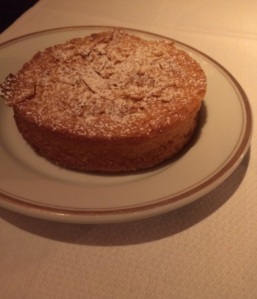
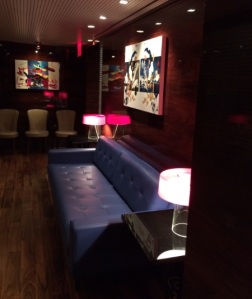
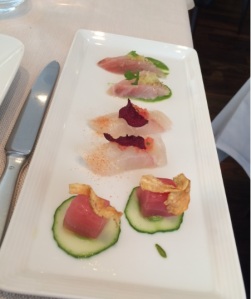
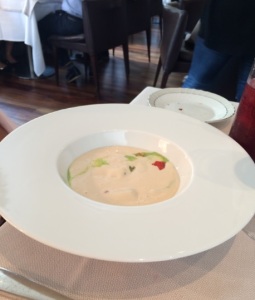
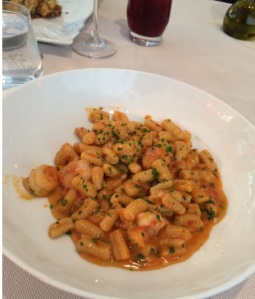
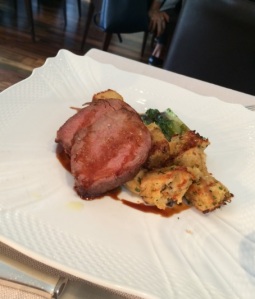
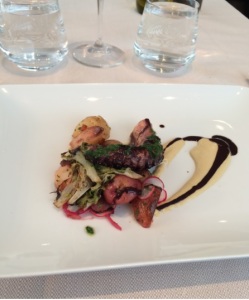
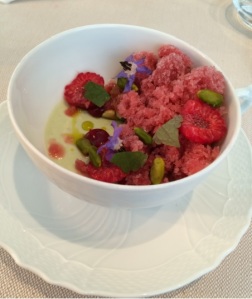
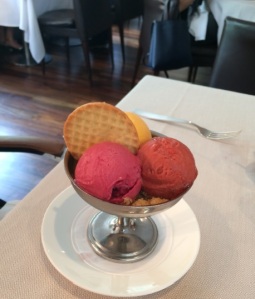

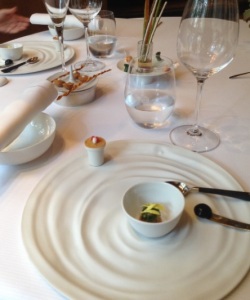
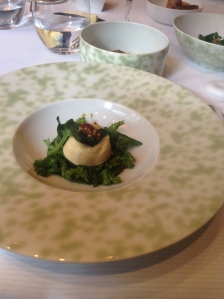
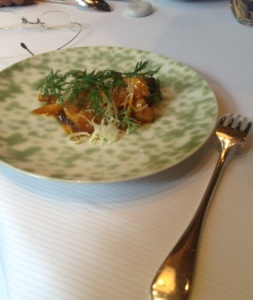
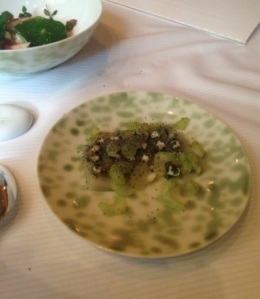
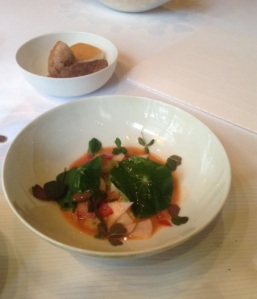
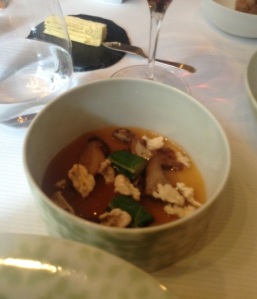
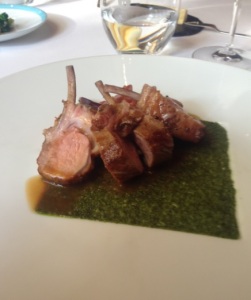
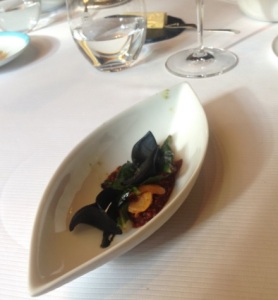
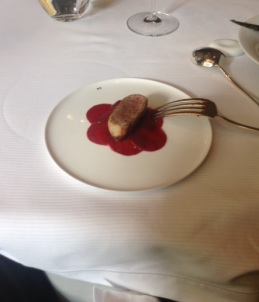
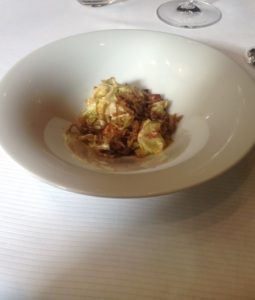
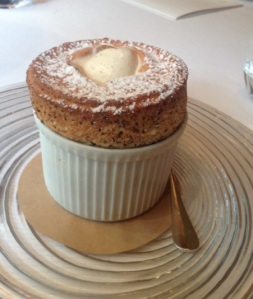
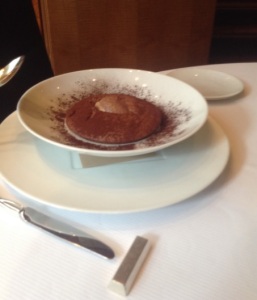
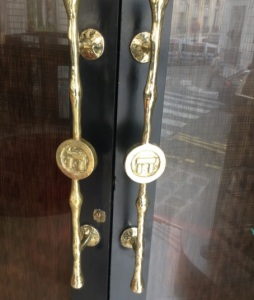

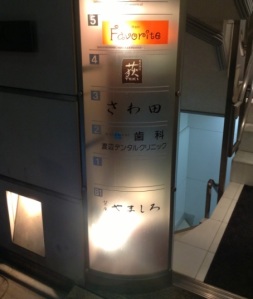
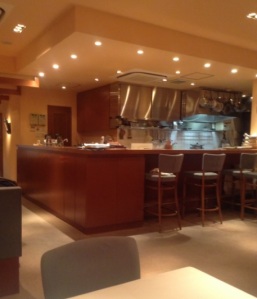
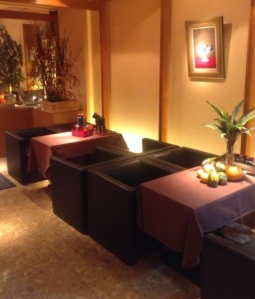
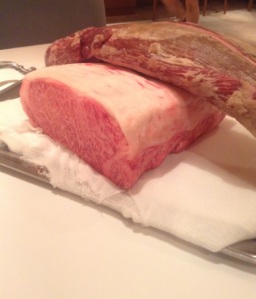
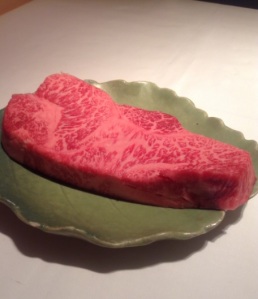
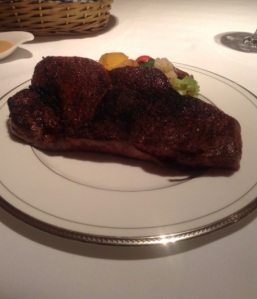
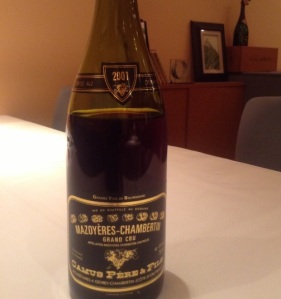

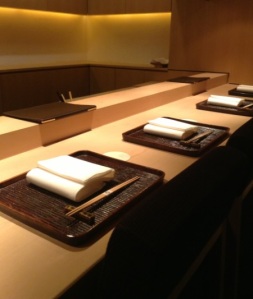
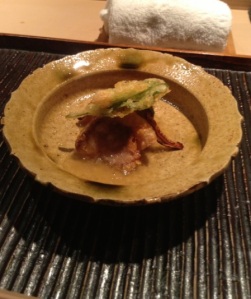
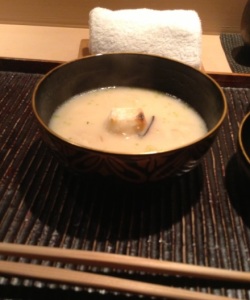
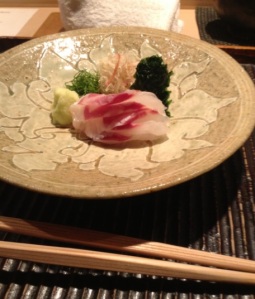
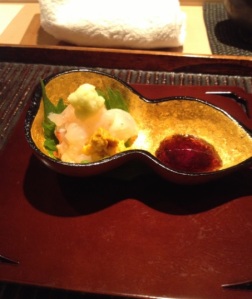
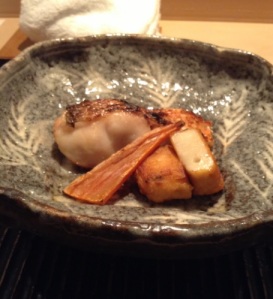
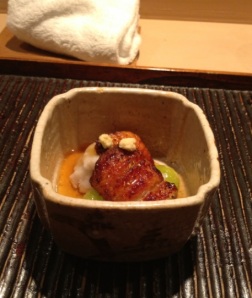
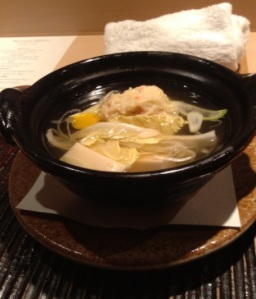
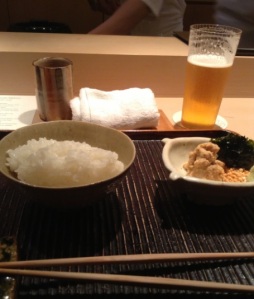
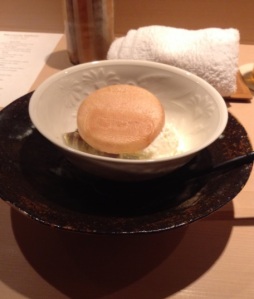
You must be logged in to post a comment.